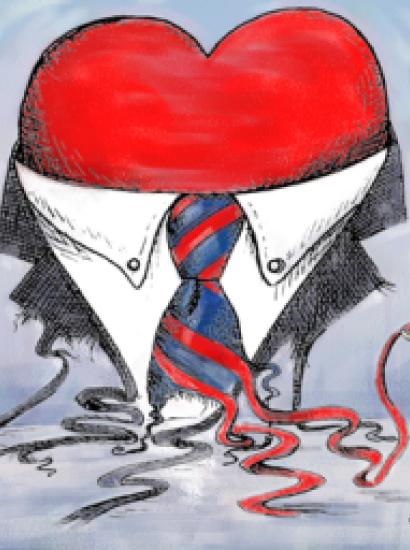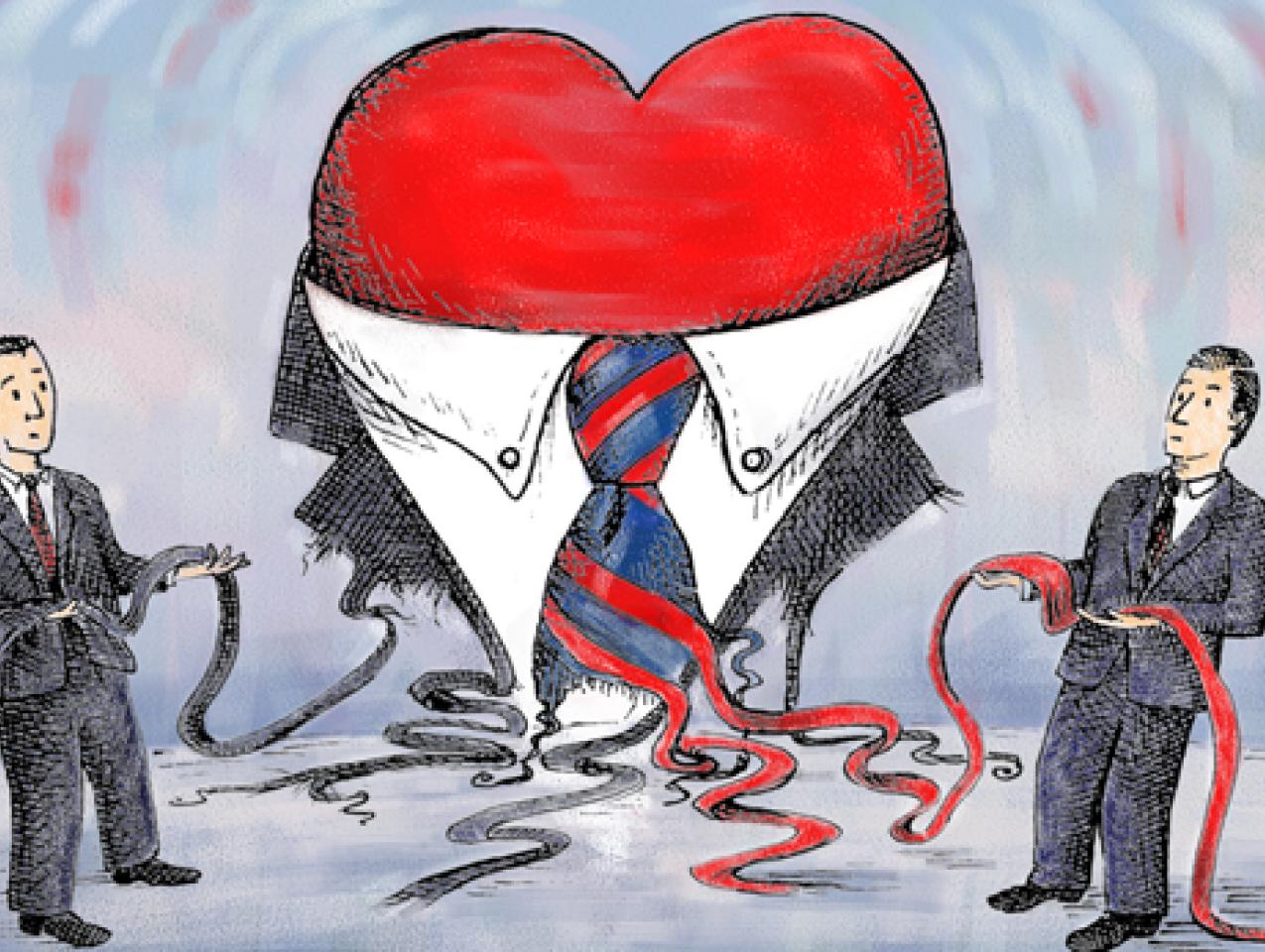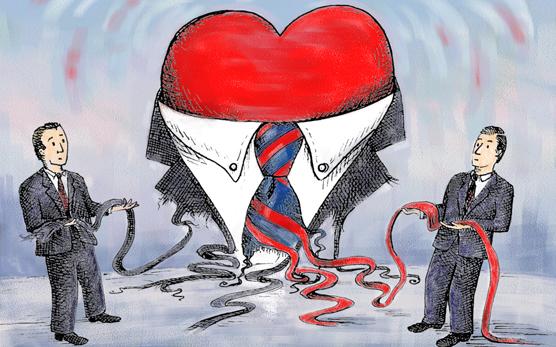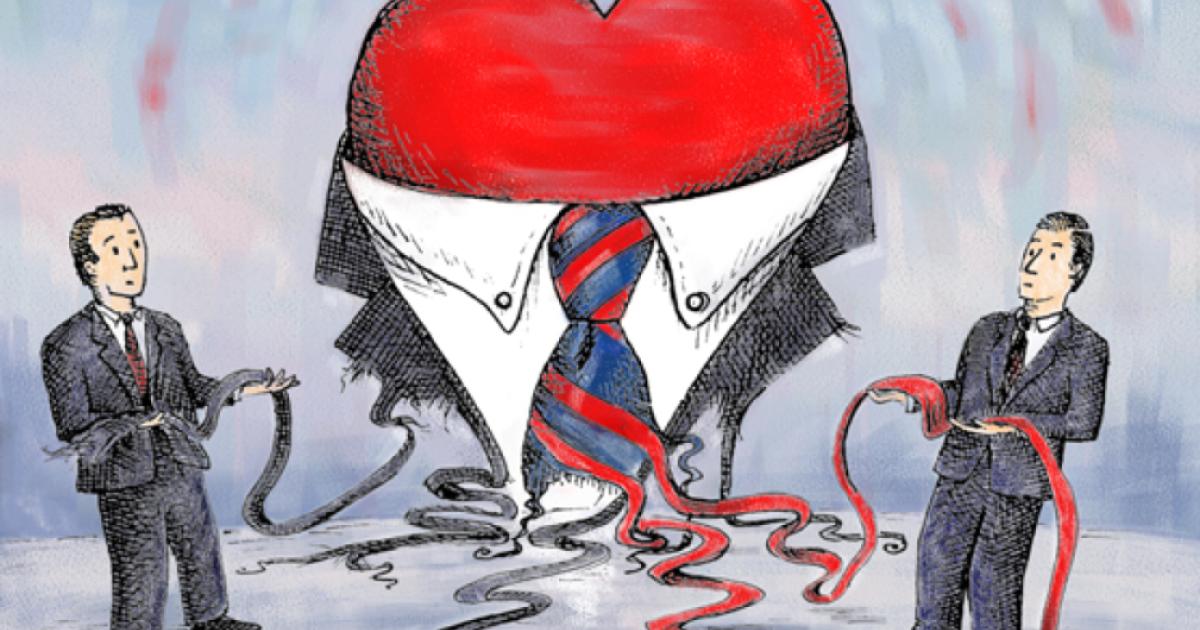- Politics, Institutions, and Public Opinion
- Law & Policy
- Civil Rights & Race
Editor’s note: This is the third installment in a five-part essay series by the author on compassionate conservatism. The first essay, "Compassionate Conservatism: A Primer," can be found here. The second essay, "Compassionate Conservatism, An Idea in Tension," can be found here.
On January 29, 2001, George W. Bush affirmed his resolve to follow through on his compassion initiative by declaring, "This is an effort that will be an effort from now, the second week of my administration to the last week of my administration, because I am confident that this initiative when fully implemented, will help us realize the dream that America, its hopes, its promise, its greatness, will extend its reach through every single neighborhood, all across the land."
In our previous segments, we considered the political and ideological backdrops to George W. Bush’s program of "compassionate conservatism," including the two thinkers whom Bush declared to have shaped his own views, Myron Magnet and Marvin Olasky. We now turn to consider how the program played out in practice.
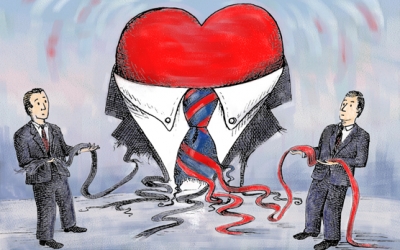
Illustration by Barbara Kelley
Let’s begin with Bush’s presidential memoir Decision Points. Like all former presidents, Bush presents his memories of his administration in the hope of shaping ours. As regards compassionate conservatism, however, he doesn’t make much of an effort. The term, once so central to his rhetoric, appears not even once in the book. Bush does devote four of his 477 pages (pp. 277-81) to his record of "faith-based programs." His treatment of his signature domestic project is not only brief but wistful. He notes that he had opened $20 billion in federal grants for small grassroots community organizations, that 5,000 such groups had in fact been funded, and that criminals enrolled in faith-based programs backslid into crime less often than others.
Bush ends, however, by slipping into nostalgia. He recalls a single touching event—his encounter with a reformed murderer as a guest at a White House function—rather than claiming major progress in transforming the welfare state. This modesty accords with the facts: even by the end of his second term, support of faith-based initiatives had amounted to only a few drops in the vast torrent of federal social spending. Why had a project so rich in promise proved so underwhelming in results?
Not for want of the requisite legal groundwork, in the form of the four charitable choice provisions that Congress had passed between 1996 and 2000. Not for want of planning or consultation on the part of (then Governor) Bush. And not for want of initial trying, or at any rate of initial fanfare.
The brief bloom of the compassion agenda
You’ll recall from the first segment of this series that "charitable choice" was not, at its inception in the Clinton years, a partisan initiative. Heavyweights of both parties (including, among the Democrats, both Clintons, Ted Kennedy, Al Gore, and Joseph Lieberman) had vied in extolling the untapped civic potential of faith-based institutions. They had endorsed leveling the playing field for the administration of federal grants to social service organizations. No longer would small grassroots operations be effectively excluded from the bidding process.
While the Clinton administration had lent its authority to the passage of such legislation—four major laws enacted between 1996 and 2000 contained "charitable choice" provisions—it hadn’t taken the administrative steps required to implement them. When the Bush administration took office, then, its first task was to do so.
Why had a project so rich in promise proved so underwhelming in results?
Bush entered the White House with concrete plans and cadres determined to realize them. His collaborators included John J. Dilulio, Jr., one of America’s most respected scholars of public policy. A native of working class South Philadelphia, Dilulio was a lifelong Democrat and leading advocate of "charitable choice." Because "charitable choice" was an issue on which Bush and Gore agreed at least in principle, Dilulio had advised both of their campaigns. He thus embodied the bipartisanship that Bush hoped would inform the compassion initiative.
Dilulio also brought to the compassion initiative a perspective on it far older (and by that very fact less partisan) than Marvin Olasky’s homespun evangelical one. Laypeople knew it as "Catholic social teaching." It was an outlook that traced its descent as far back as Aristotle.
There was nothing inherently partisan about Catholic social teaching. As Dilulio expounded it, it wasn’t even exclusively Catholic. It didn’t presuppose your acceptance of Catholic theology. The other members of Bush’s circle who embraced it, like chief speechwriter Michael Gerson and whiz kid David Kuo (whom Dilulio would appoint as his own chief assistant), were prominent evangelicals.
Catholic social teaching stresses the principle of "subsidiarity." It views families, churches, and other local associations and communities as the true pillars of society. Should these, however, prove insufficient to cope with the pressing problems of the day, the broader society has a duty to come to their assistance. Assistance should only be offered where necessary, but where it is necessary, the obligation to provide it is firm. Because healthy families and civic competence remain central concerns, public policy must aim to help citizens act effectively on their own behalf. Government should nurture self-help initiatives arising from among the poor themselves.
Note that despite the Catholic origins of this outlook, nothing in it contradicted the federal government’s constitutional duty to remain neutral in matters of religion. As Bush himself was forever repeating, the aims of faith-based initiatives were only of this world. They were the appropriately secular goals of modern liberal democratic social policy: reducing poverty, improving public health, counseling adults and children at risk, and combating drug addiction and recidivism.
Faith-based programs, like secular ones, would be enlisted strictly as means to these stated goals. Those programs successful in obtaining grants would be subject to the same standards of evaluation as secular programs. In no respect would faith-based approaches enjoy any priority to others. (Indeed, one of Dilulio’s first acts in office was to repeal an unimplemented Clinton-era regulation that would have set aside a certain percentage of funding for faith-based programs.) At the same time, the equal participation of religious organizations in achieving these secular goals would be permitted and encouraged by a program of outreach and mentoring.
Bush’s greatest deeds of compassion were foreign rather than domestic.
So if Magnet and Olasky had first shaped Bush’s view of his compassion agenda, it fell to Dilulio and Gerson to implement and articulate it. On January 29, 2001, Bush announced the appointment of Dilulio as Assistant to the President (a rank indicating one of the president’s most senior advisors, like Karl Rove, Karen Hughes, and Condoleezza Rice). Bush also named Dilulio the first director of the newly created White House Office of Faith-Based and Community Initiatives.
At the same press conference in 2001, Bush named Stephen Goldsmith as chairman of the Corporation for National Service. Goldsmith, a moderate Republican, had been Bush’s chief domestic political advisor during the campaign. Earlier, as mayor of Indianapolis, he had launched the Front Porch Alliance, a widely admired pilot program of public support of grassroots agencies. The press conference thus reaffirmed the compassion agenda as the cornerstone of the administration’s social agenda.
Dilulio was living on borrowed time, however. He had agreed to serve the administration for just six months before returning to his scholarly and community pursuits. During that span he would successfully oversee a multiagency study of federal granting procedures, a crucial prelude to their revision and to the crafting of any further charitable choice laws. He would also succeed in bringing the U.S. Conference of Mayors on board the compassion train. Although most of the mayors were Democrats, they formally endorsed the president’s compassion agenda.
It was another story, however, with the final item on Dilulio’s short-term agenda, which was the implementation of model match-funded public-private partnerships. This goal was crucial, for it alone would display the compassion agenda in action. It would prove doggedly elusive. Just one year into the Bush administration, Dilulio met rather glumly with James Towie, his successor as director of the Office of Faith-Based and Community Initiatives. He would warn Towie that little had happened in the way of making the compassion agenda a reality, and that little was likely to happen. The compassion initiative had quickly unraveled, proving to be much ado about little.
Too much else on the table
The most obvious reason for the failure of the compassion agenda to launch was 9/11 and its aftermath. An administration that had taken office with few aspirations in foreign policy had stumbled into a maelstrom of war. Its domestic initiatives were upstaged and its capital—social, moral, as well as fiscal—scattered to the winds.
But this explanation is only partly correct. Compassionate conservatism, a domestic program intended for sunny and prosperous times, wilted in the glare of these harsh new realities.
The most obvious reason the compassion agenda failed to launch was 9/11.
The sum of all harshness was fiscal. When Bush took office in January 2001, the U.S. budget was balanced for the first time in decades and the Congressional Budget Office was forecasting a decade of surpluses totaling $5.6 trillion. Yes, you read that last sentence correctly.
True, Bush moved to avert the threatened unhealthy surpluses through tax cuts. Even so, his compassion agenda seemed attainable. In a speech in Indianapolis in July 1999, he had inveighed against those who, relying entirely on volunteerism, demanded of compassionate Americans that they "make bricks without straw" (was he casting his father as Pharaoh?). He himself proposed $8.2 billion a year in new programs, spinning this as a mere "10 percent of the non-Social Security [budget] surplus." $6.3 billion of that sum would be in new charitable tax credits, while $1.9 billion would fund specific projects, including a "Compassion Capital Fund" of $200 million to help faith-based and other small local charities. With this much straw, the bricks of compassion would stack from the earth to the moon.
By 2003, however, this rosy picture had reversed itself, and the forecast was for ever-growing deficits. With two wars on foot and the soaring costs of the welfare state as it already existed, Bush was no longer in a position to foot the bill for its transformation. Time after time, then, the Office of Faith-Based and Community Initiatives gave way to other priorities. While Bush remained nominally committed to "empower[ing] the armies of compassion," those armies, like others, travel on their stomachs.
Bush’s greatest deeds of compassion proved to be foreign rather than domestic: his campaigns against malaria and AIDS in Africa. His main domestic accomplishment had been his project for educational reform, the No Child Left Behind Act. Then there was the prescription drug benefit for seniors, a classic big government program if there ever was one. Some Bush aides billed all these projects—and even the intervention in Iraq, construed as humanitarian—as expressions of "compassionate conservatism." Well, maybe, but if this was the good fight, it was unfolding awfully far from the Office of Faith-Based and Community Initiatives.
There were, then, daunting external obstacles to the success of the compassion agenda. Yet neither the wars nor the deficit had deterred Bush from the prescription drug benefit, while the Office of Faith-Based and Community Initiatives went hungry. In fact, the compassion agenda was faltering even before 9/11. In the next segment, we will examine why.









